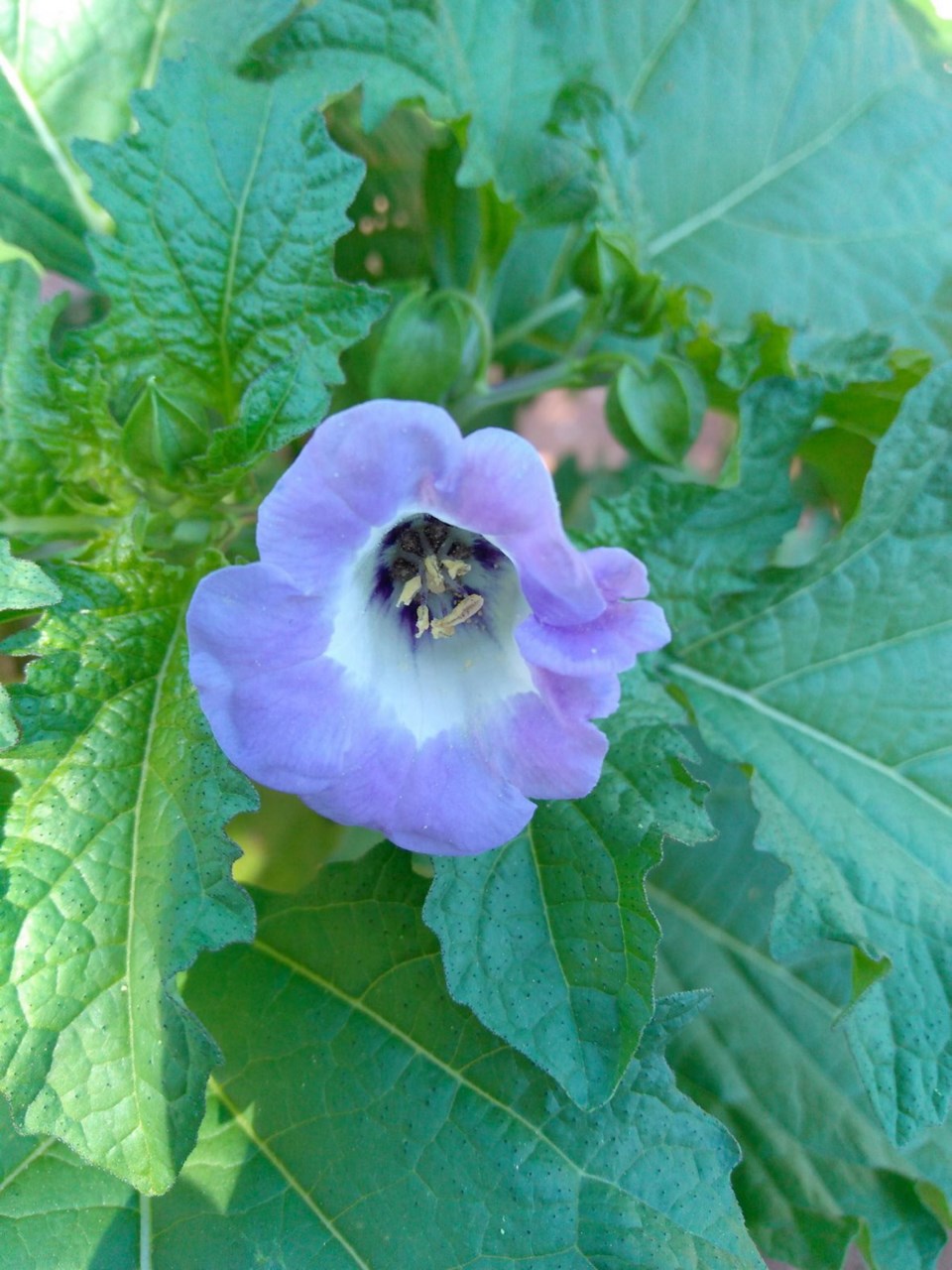Dear Helen: Can you tell me what this blue flower is? It has self-sown in my garden.
S.W.
Your “volunteer” plant is Nicandra physalodes, commonly known as shoo-fly plant but also called “Apple of Peru.” It’s a vigorously bushy annual, 60 to 150 cm tall depending on the growing conditions, with handsome, wavy-edged leaves and summer-long sky-blue, bell-shaped flowers followed by attractive, papery pods that are used in dried arrangements.
Native to Peru, Nicandra is an old-fashioned garden favourite, grown for its decorative qualities and also for its possible fly-repelling qualities. It used to be grown commonly around farm homes for that purpose, and in greenhouses to help control whiteflies.
I acquired seed years ago, and the plants have made a modest return appearance every year since. From its popularity in years past, Nicandra has become modestly naturalized.
Currently, few catalogues list the seeds. One that does is Brother Nature Seeds, located in Victoria. Their listing of Nicandra suggests a possible reason for the plant’s fly-repelling reputation: “We believe the pods, when dry, resemble small hornets’ nests.”
The J. L. Hudson catalogue, a source for many unique and unusual vegetable and flower varieties, lists the regular Nicandra as well as ‘Nigra,” a form with deep purple-black stems and pods flushed with purple. I’ve seen that variation from time to time in my self-sown plants.
Seeds for a Nicandra with variegated leaves used to be available. I’ve grown that one too, but I don’t see it listed in any of my sources now.
Dear Helen: My three-year old Eucryphia tree is shedding leaves. They turn orange and drop off. Is this normal? — M.N.
The young tree in your photo looks healthy. It is normal for a broadleaf evergreen to shed up to a third of its leaves at a time. That’s the way the plants keep themselves renewed.
My long-established Eucryphia tree is sprinkled only sparingly with orange-brown leaves that the tree will discard, but I notice that a star jasmine (Trachelospermum jasminoides) is dotted far more thickly than usual at this time of year with orange leaves, just like your Eucryphia.
This evergreen leaf shedding is commonly most pronounced in late autumn through early spring. I‚Äôm thinking that the oddly cool temperatures through June and early July may have triggered an unseasonal discolouring and shedding of leaves. On many of those days I¬Ýheard people commenting that the weather felt distinctly fall-like.
Eucryphia is a broadly columnar tree with white flowers in late summer. To grow and flower well it needs a neutral to slightly acidic soil that is kept consistently moist but drains efficiently of excess moisture.
For good flowering, the body of the tree needs to be in sun, while the roots are in shade. My own tree illustrated that need when, for years, it grew well but never flowered — until a neighbour removed a coniferous evergreen grown to giant size next to a nearby side fence. The exposure to sunlight that followed brought on a flush of lovely blooms.
Dear Helen: The tomatoes in my greenhouse already are distorted by monkey face. What can I do? I don’t want to lose the crop.
G.P.
I suspect you are referring to a deformity in the fruit known as catfacing, a physiological disorder causing puckered surfaces and bands of scarring across the far (blossom) ends of the tomatoes. It is caused by stressful growing conditions that interfere with good pollination and fruit development.
In unheated greenhouses this spring and early summer, the cause of the catfacing was probably the abnormally cool weather interspersed with a few sunny, warm days. This would have caused stressfully wide temperature fluctuations between day and night temperatures.
In the outdoor garden, flying insects and breezes usually take care of pollination, other conditions being congenial. In a greenhouse, the necessary shifting of pollen in the flowers can be accomplished by a gentle shaking of the plants late in the morning, when any dews have evaporated and the pollen is sure to be dry.
As the weather settles into a more summer-like pattern, fruit development will very likely normalize. But as temperatures rise, be aware that extremely hot temperatures in a greenhouse can cause enough sterilization of the pollen to also cause catfacing. The pollen can become sterile at around 32 C. Ensure enough ventilation to moderate the temperature.



